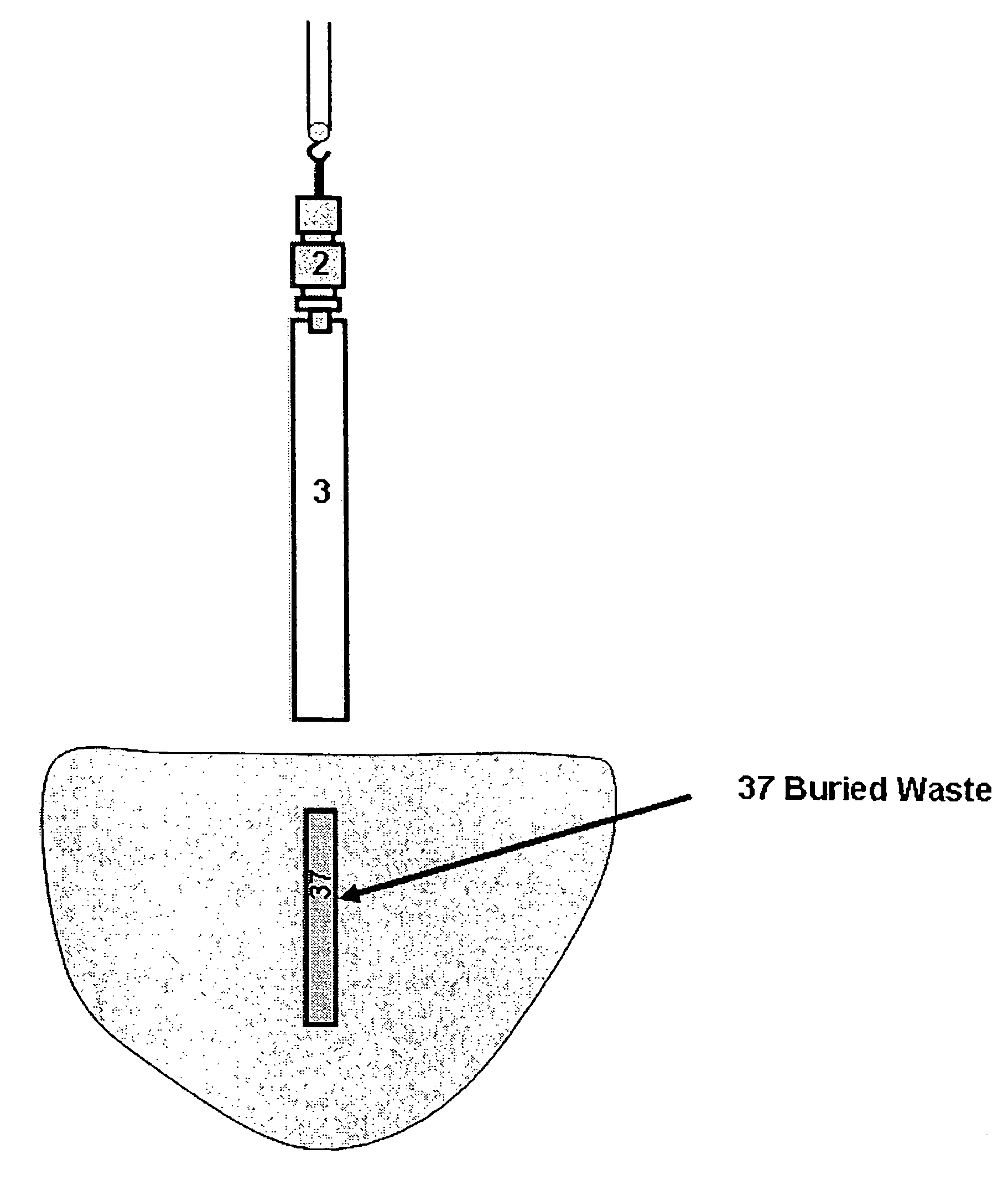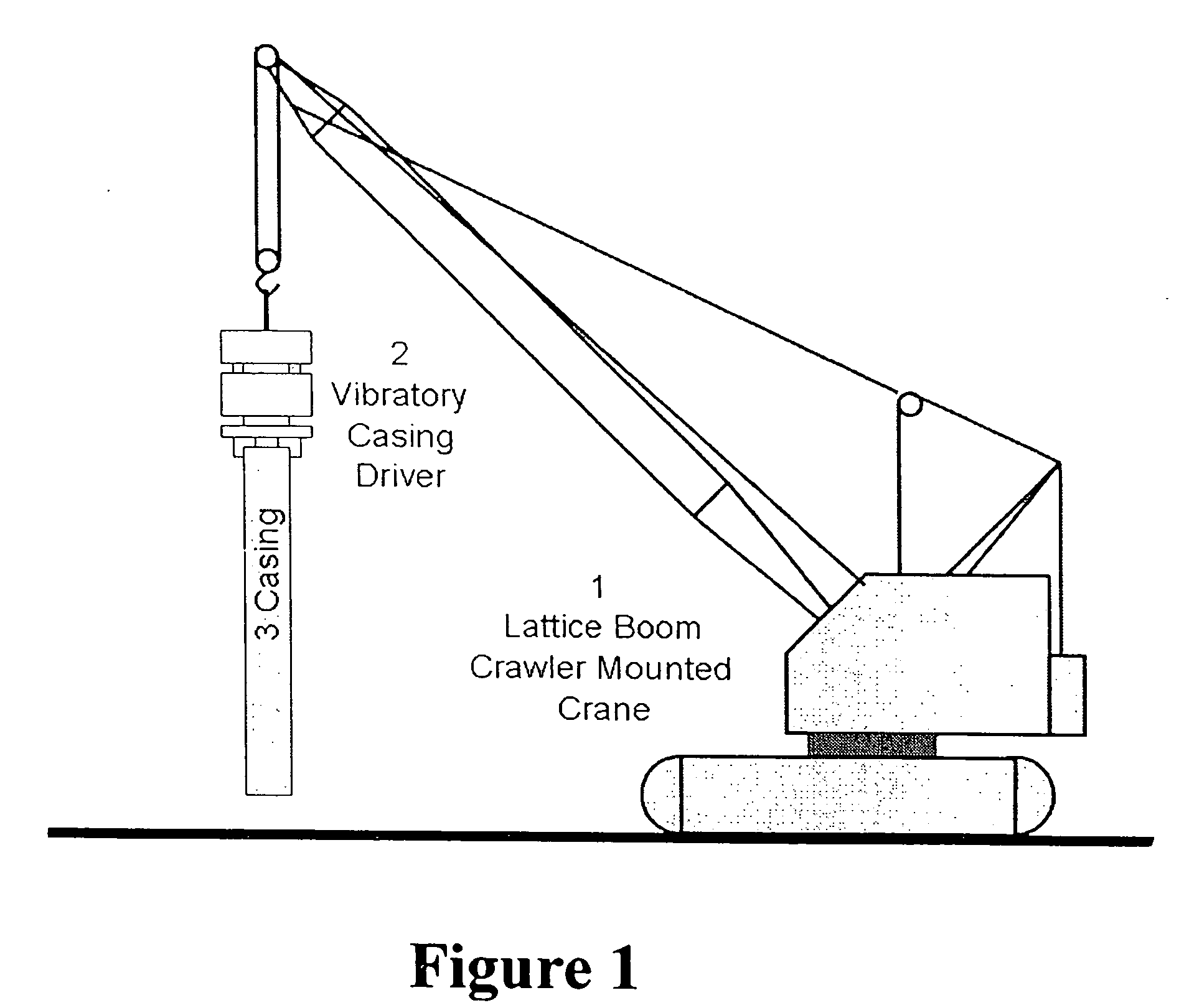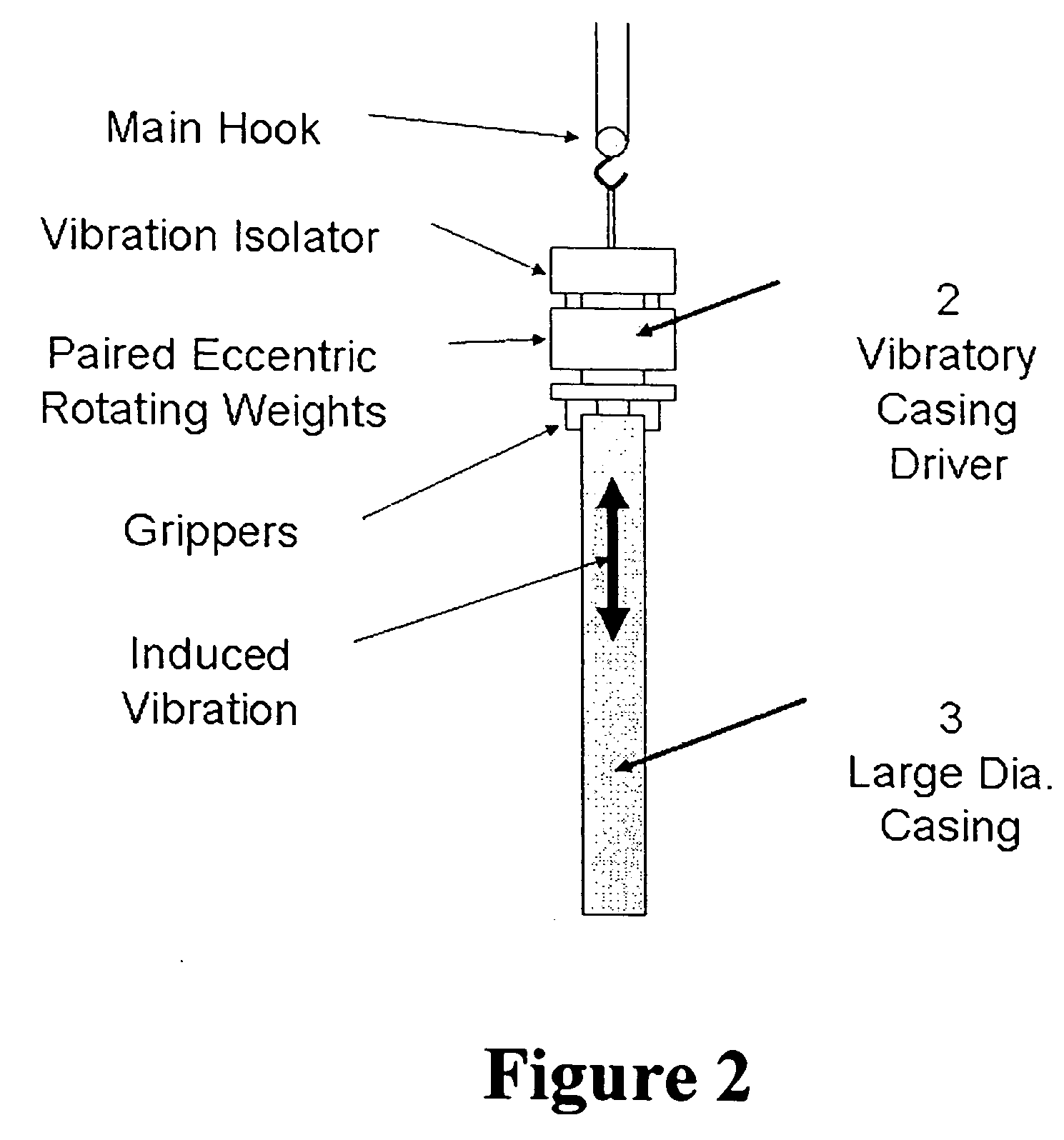System and method for removal of buried objects
a technology for buried objects and removal methods, applied in nuclear engineering, applications, caissons, etc., can solve the problems of difficult retrieval using normal excavation techniques, high radiation risk of vpus, undue risk to workers or the environment, and achieve the effect of minimizing potential radiological or chemical exposure and short tim
- Summary
- Abstract
- Description
- Claims
- Application Information
AI Technical Summary
Benefits of technology
Problems solved by technology
Method used
Image
Examples
Embodiment Construction
[0039]Referring to the figures, there are depicted some, but not all, embodiments of the present invention.
[0040]In FIG. 1, there is depicted crane 1 carrying vibratory casing driver 2, which driver 2 is connected to casing 3 so that casing 3 is suspended over the ground.
[0041]FIG. 2 is a more detailed view of the vibratory casing driver (2) and casing (3) showing the three main elements of the casing driver (grippers, paired rotating eccentric weights, and vibration isolator). It further shows the up-down direction of induced vibration of the casing. In operation, the casing is attached to the vibratory casing driver with the hydraulic grippers or clamps. As a safety precaution, the casing is also attached loosely to the main hook with one or more slings and shackles (not shown).
[0042]In operation the process begins with establishing the target or location for overcoring (surrounding) the buried waste. At this point a centralizer casing positioning system (see FIG. 11) is preferabl...
PUM
 Login to View More
Login to View More Abstract
Description
Claims
Application Information
 Login to View More
Login to View More - R&D
- Intellectual Property
- Life Sciences
- Materials
- Tech Scout
- Unparalleled Data Quality
- Higher Quality Content
- 60% Fewer Hallucinations
Browse by: Latest US Patents, China's latest patents, Technical Efficacy Thesaurus, Application Domain, Technology Topic, Popular Technical Reports.
© 2025 PatSnap. All rights reserved.Legal|Privacy policy|Modern Slavery Act Transparency Statement|Sitemap|About US| Contact US: help@patsnap.com



